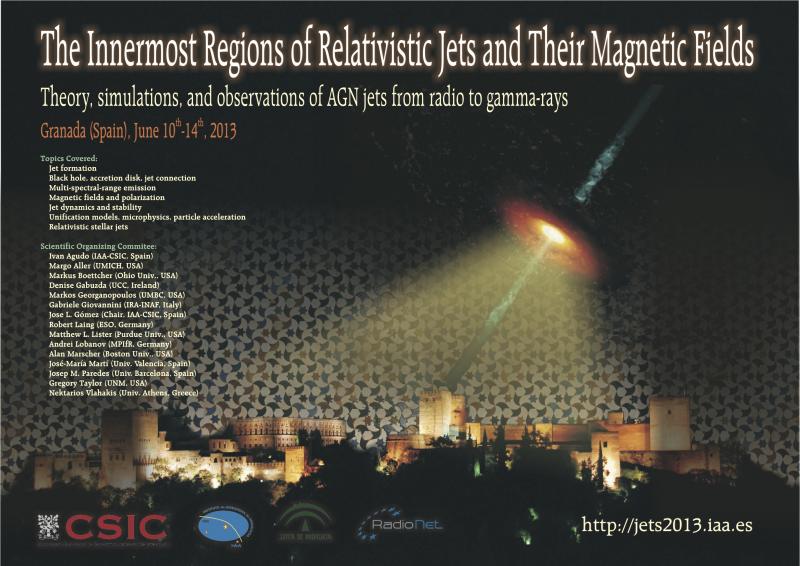The Innermost Regions of Relativistic Jets and Their Magnetic Fields. Granada (Spain). June 10th-14th, 2013.
Acosta Pulido, Jose A.
Near infra-red polarimetry of a sample of Blazars.
Author list: Jose A. Acosta Pulido, Antonio Preyra, Irene Agulli, Iván Agudo, Jose L. Gómez, Alan P. Marscher, Svetlana G. Jorstad
The polarization variability is one of the most ubiquitous characteristic of the blazars. In order to select the most successful models for jet acceleration and collimation, the analysis of multi wavelengths is necessary (Agudo et al, 2010, Marscher et al, 2008). The commonly observed gamma-ray flares sometimes is associated with optical polarization rotations and other not, which indicates that the paradigm of the innermost regions of the blazar jets should be based on multiple scenarios.
Contrary to the optical measurements, the near infra-red (NIR) polarizations measurements of blazars are less frequent. In this sense, the NIR regime can be essential to understand non correlated behaviour between the optical and radio regimes. In this work, we report NIR polarimetry measurements of a sample of 28 blazars gathered with LIRIS at WHT/La Palma in several runs in 2011. The sample was selected to contain the brightest mm and gamma-ray blazars with typical optical mag. < 18. The majority of the blazars were observed more than one epoch using two filters (J and Ks). We will present preliminary results for the whole sample, including correlations between polarization and photometric measurements.
In addition, we will shortly describe the new capabilities of the camera/spectrograph LIRIS at the WHT, regarding near-IR polarization measurements, as a promising instrument for AGN studies.




